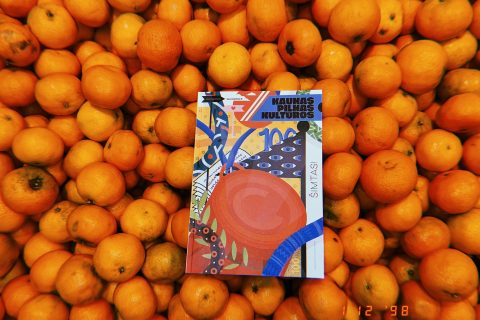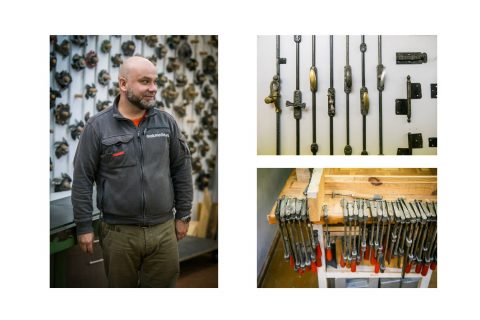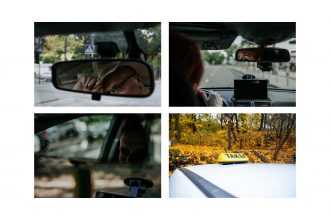A few weeks ago, I sat down in one of Kaunas cafes, where you can always find Kaunas Full of Culture magazines. While waiting for my coffee, I saw a girl reading my article. I have to admit, a grin appeared on my face. This is how the idea arose to devote some love and space in the 100th issue to those who always read and support us.
Two women caught my eye: Viktorija Mašanauskaitė-Rinkšelė from Kaunas, well-known in the city’s cultural field, and Ingrida from Vilnius, who briefly introduced herself simply as a reader. Their experiences of reading the magazine are quite different, but their anniversary greeting for the editorial staff is almost the same: to stay inspired and continue this work. I must admit, knowing that we have such readers makes writing much more enjoyable.
How should I introduce you?
Viktorija: I am an actor in the cultural field of Kaunas, I was actively working in this field when Kaunas Full of Culture appeared. To be more precise, I have been working in culture for ten years, but I am currently on maternity leave.
I must admit, I am glad that you invited me to talk right now when I’m slightly distanced from everything. Yesterday, before we met, I just went through all the issues at home and realized that the collection started missing magazines from September 2022 until now. It marks exactly a year since Jurgis was born. Kaunas Full of Culture confirmed the break that happened to me. Of course, it wasn’t that I didn’t read anything, after all, magazine articles can be found on the Internet.
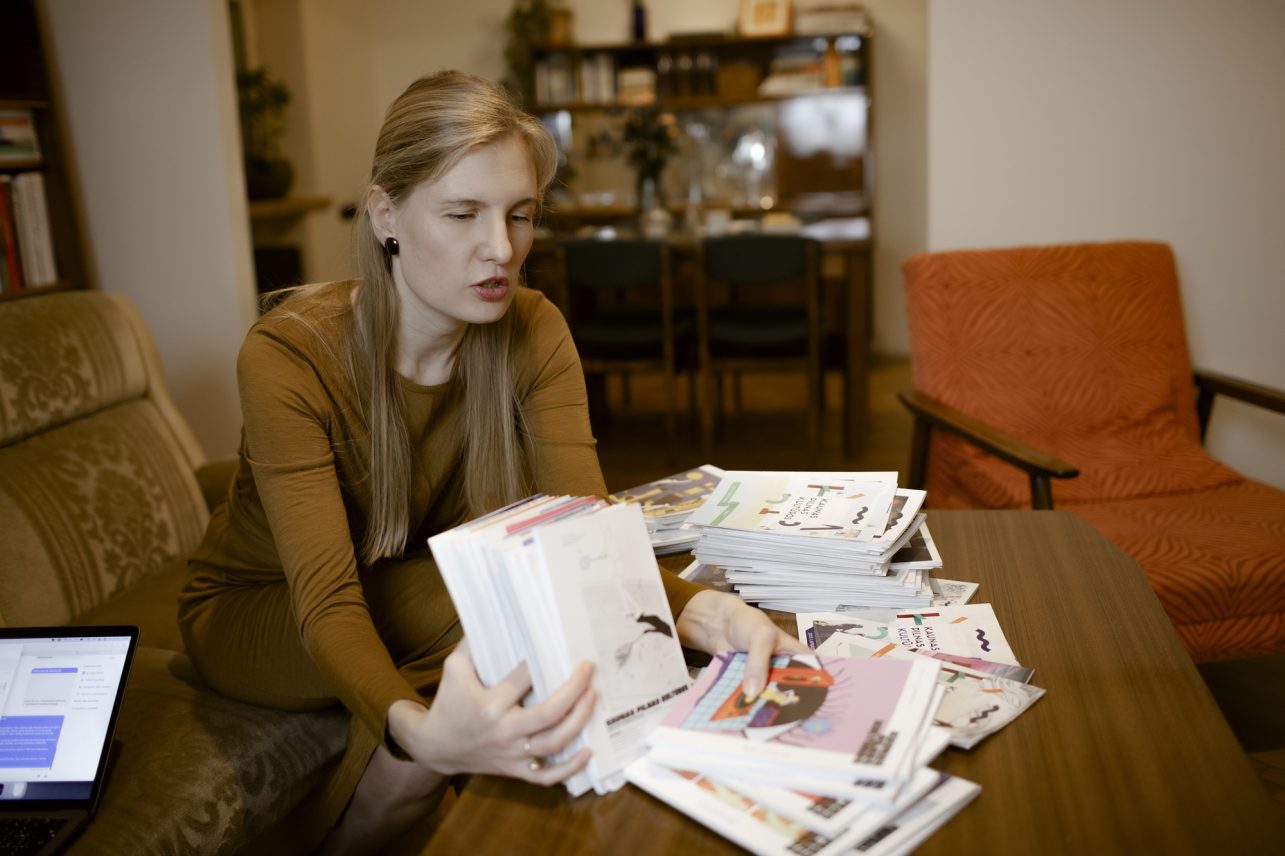
Ingrida: I am a reader of Kaunas Full of Culture from Vilnius.
Do you remember when you first heard about this magazine?
Viktorija: If I’m not mistaken, I first heard about Kaunas Full of Culture from Vaida Stepanovaitė, who is a curator. She mentioned that a new cultural publication is about to emerge. At that time, I was working in the International Media Art and Music Festival Centras, and I was looking for ways to advertise it. The magazine turned out to be a great place for that. That’s what happened: an article about Centras appeared in the second issue.
I also remember that in 2015, a magazine of this format was really unexpected because Kaunas was still a little different at the time. It is also interesting that the problems mentioned in the very first issue – the lack of dissemination of cultural initiatives, the lack of self-confidence, or optimism – have been solved today. And now, reading it 8 years later, it seems like a lot has really changed. In my view, the issues have become time machines, helping to remember how things in the cultural life of the city gradually changed and improved. The easiest way to notice this is by looking at the event calendar at the back of the magazine. It reminds you of some completely forgotten, now defunct places or events that had a difficult start but are now very well established.
Ingrida: Now, after so many years, it’s hard to remember. Might have spotted it during one of my visits to Kaunas. And when Kaunas was preparing for the year of the European Capital of Culture, many other people became more interested in the city, its architecture, history, and spirit. At the time, the magazine became a kind of detailed information booklet.
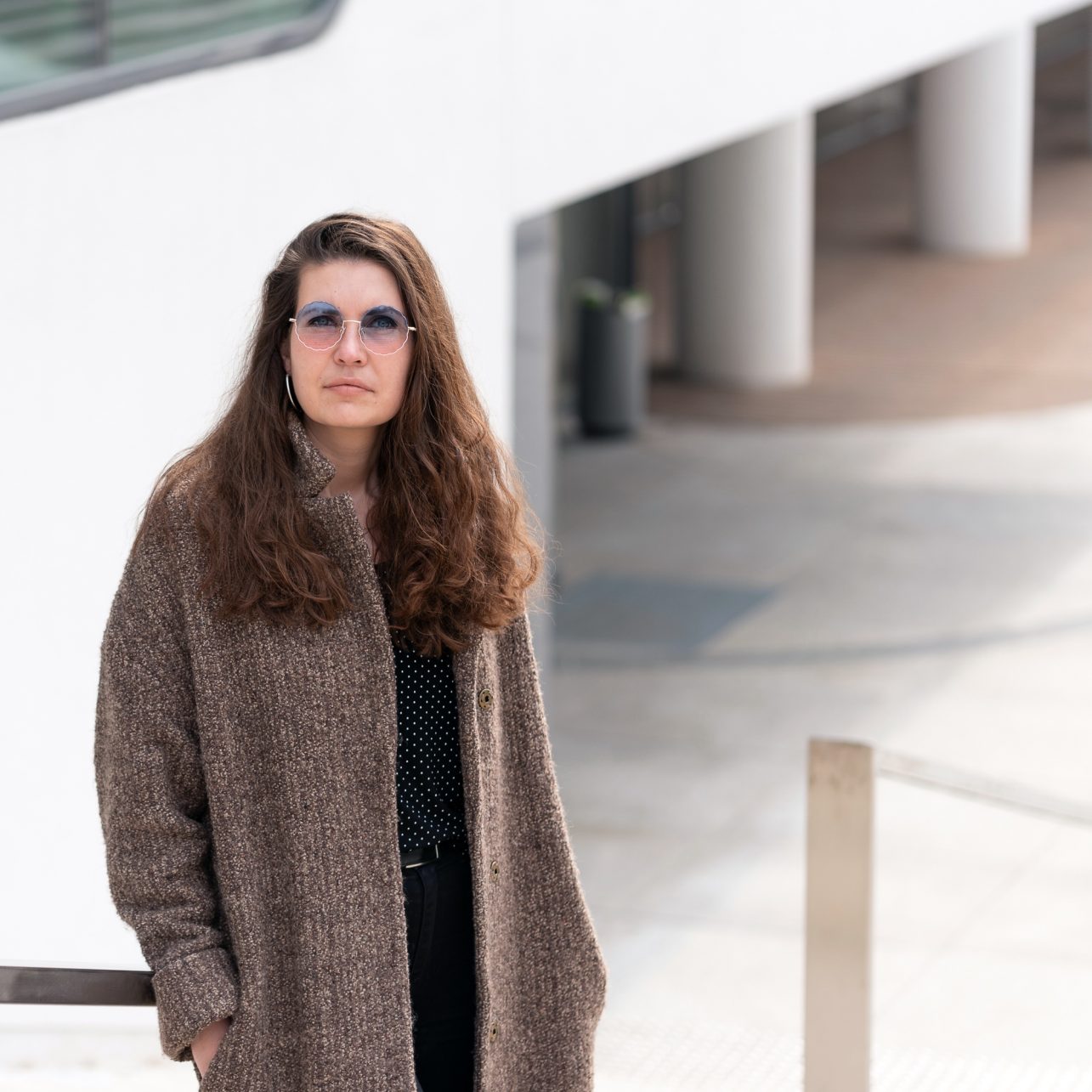
You both have magazine collections. Did you count how many issues you have?
Viktorija: I have 68 original issues. I thought the number would be closer to 100 but as I said, around 12 months fell out after the birth of Jurgis. I regularly check the issues along with the cultural itineraries online.
Ingrida: I didn’t count, but that pile looks really impressive. I don’t like to read the electronic version of the magazine; I always wait for the physical copy to reach Vilnius. When I find it in a cafe or library, I grab two copies: one for myself, the other for a friend. During the quarantine period, the magazine’s trip to Vilnius was not possible, so the publication’s staff, responded to my repeatedly asked question, “When will it reach Vilnius?” by sending me those two copies by post.
What makes this magazine different from other similar publications?
Viktorija: I love the fact that each issue is based on a different topic. Everything always sounds very simple, like the last issue Colors issue. At first glance, it may not appear to be a very eloquent topic, but the editorial team always manages to write about the most interesting things. Of course, it is also important that the magazine always chooses to interview certain people or write about things that are not necessarily in vogue. It is always about broader contexts. After all, it is a monthly publication from Kaunas. One could simply talk about the upcoming events, but this is usually not the case. Yes, there is a calendar or new itineraries, but the content of the magazine offers much more. It is not limited to the current affairs of the city and features interviews with people who are rarely heard.
Ingrida: It is difficult to compare the magazine with other urban culture publications. Kaunas interests me, so Kaunas Full of Culture has become one of the main sources of information about the city. My native city Vilnius also has a wonderful magazine called Neakivaizdinis Vilnius, which appears once a season. In it, I find information about the city’s attractions and unknown, undiscovered places.
Was there an issue that stuck out the most? Perhaps because of the topic, the interviewees, or the cover.
Viktorija: Before answering, I would like to mention that the very first issues of this magazine had a completely different design. If I’m not mistaken, it was composed of the elements of the visual identity of Kaunas, which eventually changed. And maybe there were no topics until 2017 or it was simply not mentioned. To put it briefly, the magazine changed.
Among my favorite covers are Moderation by Illustrator and your former colleague Julija Račiūnaitė and Behind the scenes by Agnė Žiūkaitė. I really like that the cover is designed by a different artist each month; this gives a lot of variety.
When it comes to conversations, in retrospect it’s hard to remember all of them. Especially now, knowing you’re releasing the 100th issue. But what I always remember very well are the editorial introductions. There is not always time to read all the texts, but things are much simpler with the introductions. They present the general theme of the issue. I am also glad that almost every issue features an interview with a familiar Kaunas resident. And sometimes, I read texts and think to myself, “Wow, I have never heard of this person, and they do such interesting things, I wonder how the editorial team found out about them?”
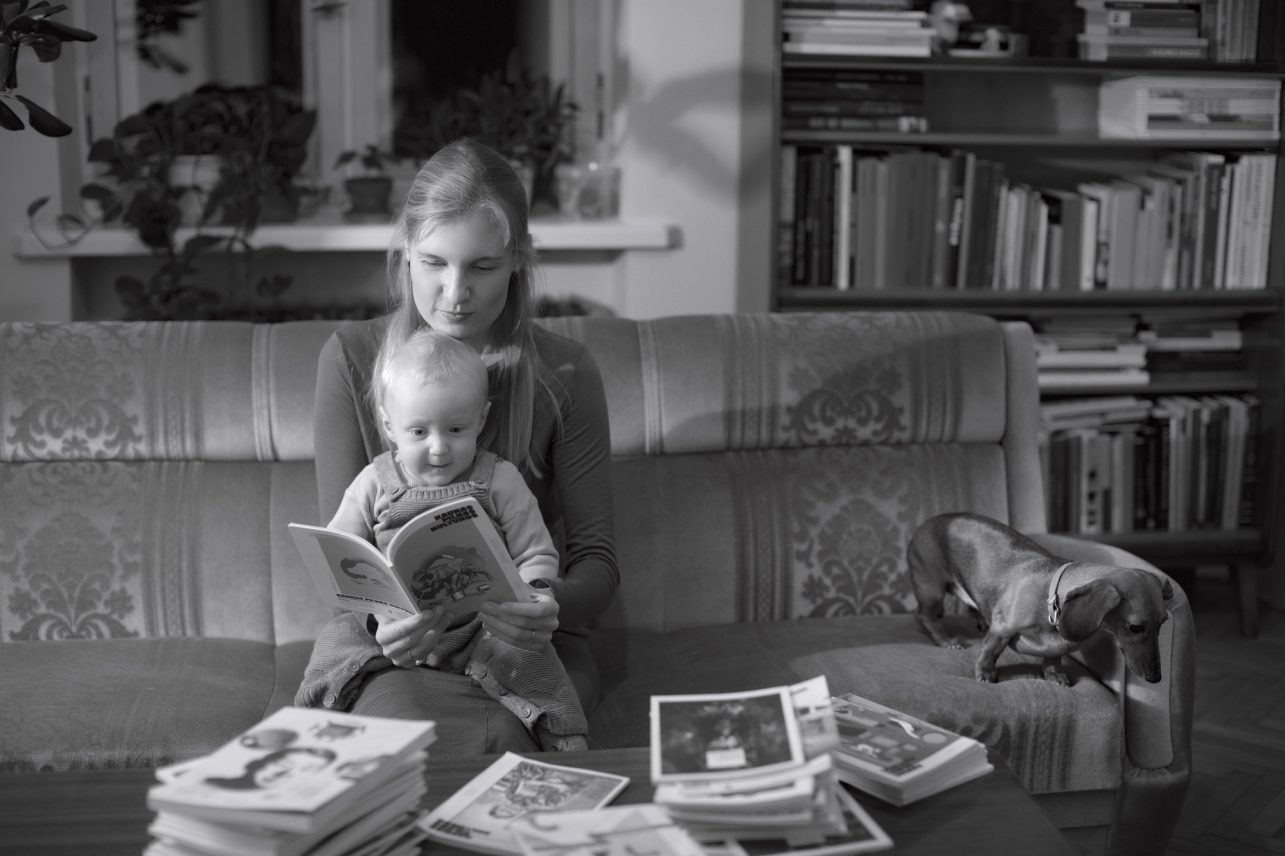
Ingrida: Each issue of the magazine is unique and much anticipated. I trust the editorial staff of the magazine, who know the culture and spirit of Kaunas very well and share with the readers the most interesting and relevant stories. I don’t remember the exact name of the issue – bicycles perhaps – but it mentioned the repaired bicycle path from Kaunas to Zapyškis. This path allows you to easily reach one of the most beautiful places in the Kaunas region: Kačerginė and its pine forest, which has become one of my vacation spots. So, everything I find in the magazine about Kačerginė makes me very happy. Kaunas Full of Culture was read more than once after a walk along the magical Šaltinių Path while sitting in Kačerga cafe and eating incredibly tasty potato pancakes.
Where do you read us? Maybe you have developed some rituals?
Viktorija: I used to read during lunch. I always ate somewhere in the old town when I worked there or later near the Kaunas Artists’ House, so I tried to take this magazine with me every time. If it was not possible during lunch, then while using public transport. I tried to fit reading in between my work because in the evenings I had to attend various cultural events.
Ingrida: The spot I choose for reading the magazine depends on when I manage to get it. I usually picked it up at a cafe in the center of Vilnius during my lunch break or at the Mažvydas Library on weekends. As soon as the magazine is in my hands, I quickly flip through it and then read it over a cup of coffee whenever I have time.
And what kind of person has not yet been interviewed, but in your opinion should be?
Viktorija: I remember, when the magazine just started, you would, once in a while, interview a foreigner living in Kaunas. It was very interesting to hear how they see our city. My husband Žilvinas Rinkšelis and I have been working in the cultural field of Kaunas for many years, and I have noticed that all my works and projects contain the word ‘Kaunas’, so we often talk to each other about the current affairs of the city. As a result, I keep thinking about how our city looks to those people who visit it for the first time.
Ingrida: As I mentioned, I trust the creators of the magazine when it comes to content. If someone has not been interviewed yet, they will be in the next issue. It is always nice to read the reminiscences of a person who has seen Kaunas that doesn’t exist anymore, recollections of buildings, factories, communities, etc. So, please, interview more of the living history!
We have never asked anyone this but… What would you like to wish for our editorial team and readers?
Viktorija: My wish for the team is not to stop. I believe that in the long run this magazine can become a legend. I know it can be hard to find the motivation, patience, and tenacity to keep going, after all, it’s not a quarterly, you’re writing every month, and it is hard work. Because of this, I wish you to keep going and we will wait for other anniversaries and the 200th issue.
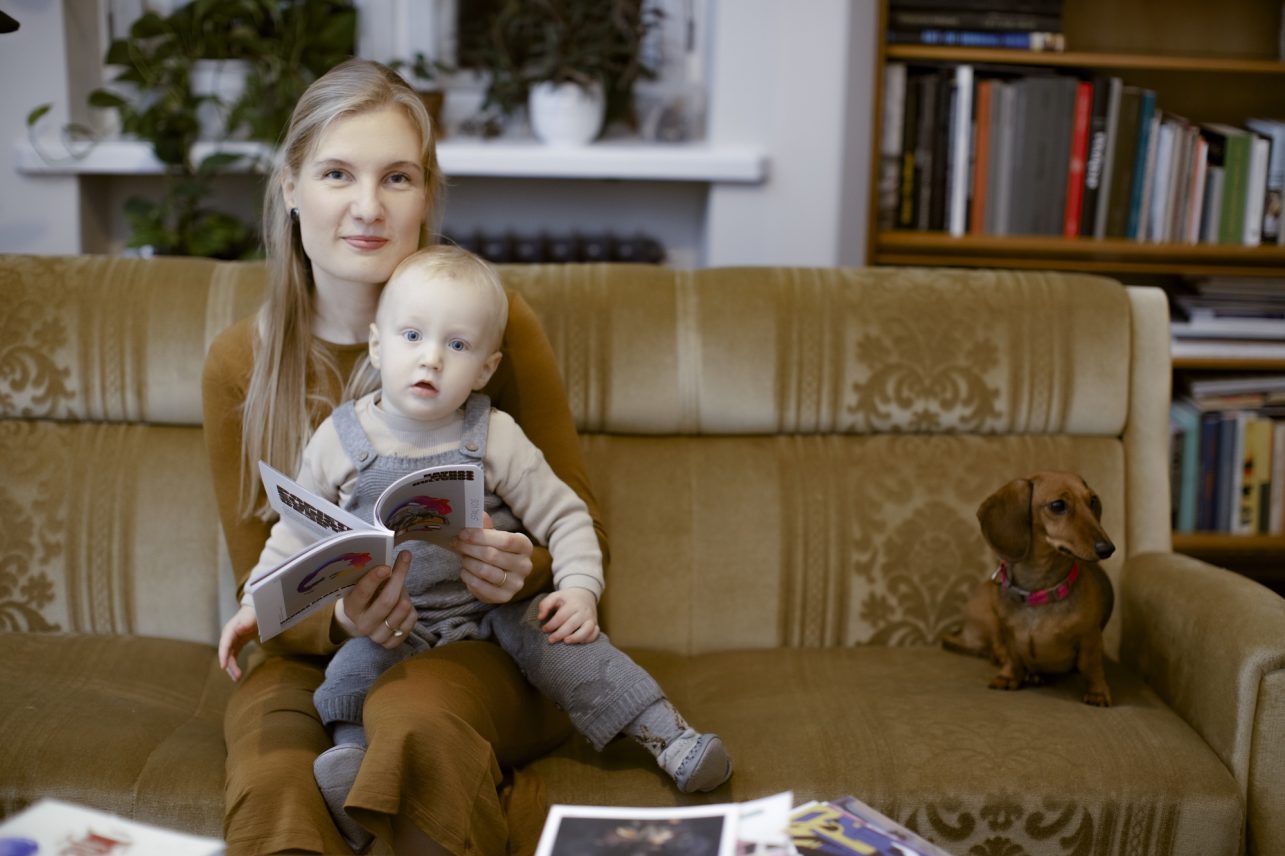
Nowadays, when everything is shifting so fast, people like to change everything and be in a constant rush. Of course, sometimes some things may not need to be continued, but let’s face it – it’s always interesting to meet someone who has been working in a theatre for 50 years. I would like Kaunas Full of Culture to exist for a long time. So, I will wish you to have more support from the readers. Such publications, like all cultural press in general, should be read. And your content is very good also, so I don’t know how it is possible not to read it. If people stopped, the editorial office would disappear, which would immediately be a bad sign for the Kaunas cultural field. So, readers, enjoy and maybe even create a slow reading ritual. Of course, with the Kaunas Full of Culture magazine.
Ingrida: I would like to wish the editorial staff to feel inspired and continue working because I believe that this magazine gives joy to the people of Kaunas and those visiting the city as well as all other fans of Kaunas and its district’s culture. Thanks for putting together such an interesting collection of readings every month. And I wish the readers good luck in finding the magazine: if you find it, take one copy for yourself and another one for a friend!

